Dental implants have transformed the landscape of restorative dentistry, providing a dependable and aesthetically pleasing remedy for individuals grappling with tooth loss. Their high success rates have made them a popular choice among patients and professionals alike. However, it is not uncommon for some individuals to experience dental implant pain years later after the initial procedure. This issue can range from mild discomfort to significant, debilitating pain, giving rise to concerns regarding the health and longevity of the implant. Understanding the underlying causes of this delayed pain, recognizing the warning signs, and seeking appropriate treatment can be vital in alleviating distress and ensuring the long-term success of dental implants.
When Post-Implant pain becomes a concern
After undergoing a dental implant procedure, many patients anticipate a smooth recovery process. However, as months turn into years, some may find themselves facing unexpected discomfort that raises important questions.
The first step in addressing tooth implant pain after 2 years is to determine whether the discomfort is a normal part of the healing phase or indicative of a more serious issue. Recognizing when post-implant pain shifts from typical post-surgical discomfort to a cause for concern is critical in maintaining oral health. The initial healing phase usually encompasses soreness, swelling, and mild pain that fades over time. Still, persistent discomfort or changes in the implant site warrant a thorough examination to rule out complications.
The initial healing phase and expected discomfort
Following the placement of a dental implant, patients should expect an initial period of healing marked by varying degrees of discomfort. This is a natural response as the body works to recover from surgery. During the first few days post-operation, it’s common to experience soreness and mild pain, which can be effectively managed with over-the-counter medications.
As the weeks progress, most patients find that any discomfort subsides significantly. However, this timeline can vary based on individual factors such as overall health and adherence to post-operative care instructions. If pain persists beyond two weeks or intensifies, it becomes essential to consult with your dentist. Early intervention can help identify the root cause and prevent further complications.
The timeline of implant integration and pain resolution
Osseointegration—the biological process where the dental implant fuses with the jawbone—plays a crucial role in the success of the implant. Typically, this integration occurs over several months; during this time, sensitivity and discomfort may persist. As the implant integrates with the bone, one would generally expect diminishing pain levels.
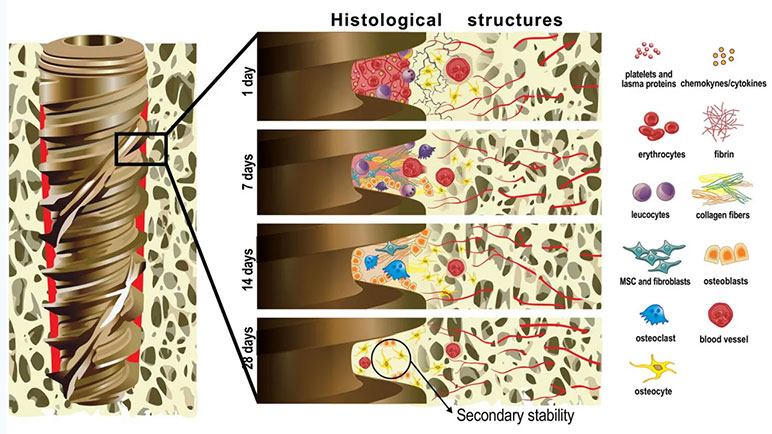
However, if complications arise during this healing phase—such as inadequate bone quality or quantity—issues may manifest years later. Recognizing the importance of this timeline helps patients understand what is normal versus what could signify a potential problem. If discomfort prolongs beyond the expected healing period, immediate consultation with a dental professional is recommended.
Common causes of delayed pain after dental implants
While many dental implants remain free of pain for years, there are several issues that may lead to discomfort even years post-procedure. Understanding these potential complications is key to effective diagnosis and treatment.
Peri-implantitis: The risk of infection
One of the leading causes of dental implant infection years later is peri-implantitis, an inflammatory condition resulting from infection of the tissues surrounding the implant. This condition often develops due to bacterial accumulation, frequently stemming from poor oral hygiene practices or inadequate maintenance of the implant.
Symptoms associated with peri-implantitis include inflammation, swelling, and pain around the implant area. If left untreated, this infection can lead to bone loss, ultimately jeopardizing the stability of the implant and increasing the likelihood of failure. Regular oral hygiene routines and professional cleanings are essential to mitigate this risk.
Osseointegration issues: When the implant doesn’t fuse properly
Although rare, osseointegration failures can occur long after the initial healing phase, leading to dental implant problems years later. Factors such as trauma to the implant site, smoking, and certain medical conditions like diabetes may inhibit proper fusion between the implant and jawbone.
When osseointegration is compromised, the implant may become loose, causing pain and instability. Identifying these issues requires active monitoring of implant health and awareness of any changes in sensation or biting function. Consulting with a dental professional at the first sign of trouble can provide timely interventions.
Bite problems and malocclusion
Bite issues, known as malocclusion, can also contribute to can dental implants cause problems years later. An improperly aligned bite can impose excessive forces on the dental implant over time, leading to pain and discomfort. This misalignment may arise from various factors, including incorrect implant positioning or improper alignment of opposing teeth.
If you notice discomfort while biting down or feel pressure on the implant, it is crucial to seek help from your dentist. They can evaluate your bite and make necessary adjustments to prevent future complications.
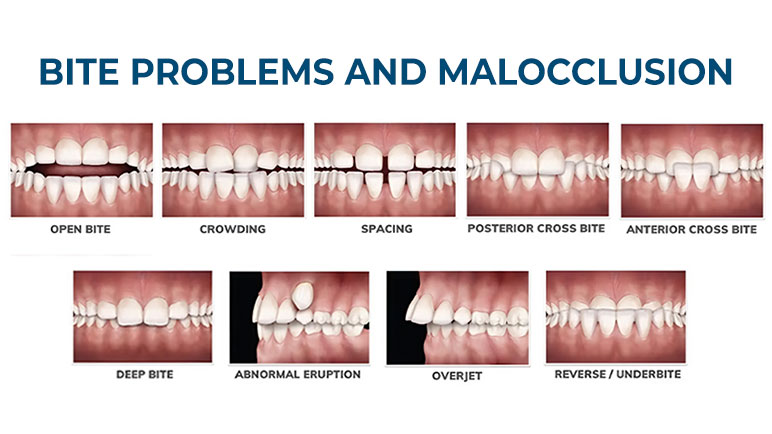
Sinus issues and nerve damage
For implants placed in the upper jaw, proximity to the sinus cavity can result in complications. Damage to the sinus membrane or subsequent sinus infections can lead to discomfort, pain, and related symptoms. Similarly, nerve damage can occur during the implant placement process, particularly when the implant is situated near the inferior alveolar nerve in the lower jaw.
Nerve damage may manifest as numbness, tingling, or persistent pain. If there are any unusual sensations following the procedure or years later, immediate consultation with a dental professional is advised.
Signs and symptoms of dental implant pain years after placement
Understanding the signs and symptoms of dental implant pain years later is imperative for prompt diagnosis and treatment. Differentiating between normal discomfort and a potential issue can empower patients to take charge of their dental health.
Persistent ache or throbbing in the jaw
While some initial discomfort after implant placement is expected, a persistent ache or throbbing pain that does not subside over time is a red flag. Such symptoms could indicate inflammation, infection, or even implant instability.
Patients should pay close attention to the nature of the pain—it can provide valuable insights into underlying issues. For instance, if the pain worsens with certain movements or activities, it’s vital to consult with a dental professional to address the concern.
Swelling and redness around the implant
Swelling and redness around the implant site, especially if accompanied by pus or drainage, may signify an infection such as peri-implantitis. These symptoms require immediate medical attention to prevent further complications, including bone loss or implant failure.
Recognizing these signs early can facilitate timely intervention, enhancing the chances of preserving the implant’s functionality and overall health.
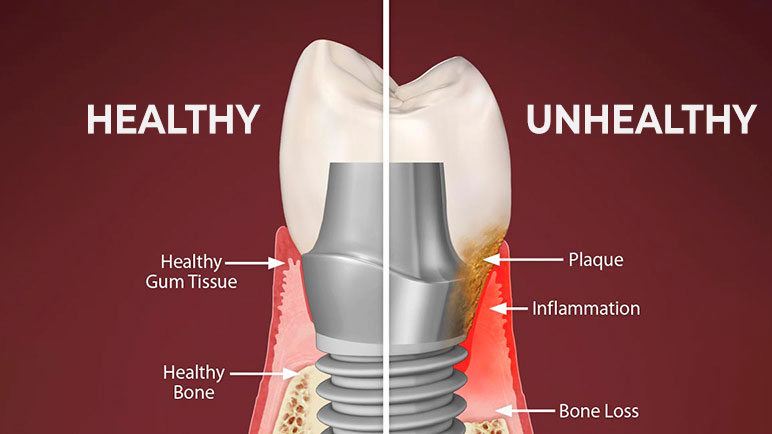
Sensitivity to hot or cold foods and drinks
Increased sensitivity to temperature changes—such as hot or cold foods and drinks—can also indicate a problem with the dental implant. Persistent sensitivity that arises long after the initial healing phase may be symptomatic of nerve damage or implant instability.
If you experience heightened sensitivity, it’s advisable to consult your dentist promptly. They can diagnose the issue and recommend suitable treatment options.
Loosening or shifting of the Implant
A noticeable loosening or shifting of the implant, or a change in how it feels when biting down, can signal a breakdown of the osseointegration process or bone loss around the implant. This situation demands immediate attention, as it may lead to more severe complications if left untreated.
Being vigilant about changes in the implant’s stability can help preserve its integrity and ensure optimal dental health.
Diagnosing the root cause of the pain
Determining the underlying cause of delayed implant pain often necessitates a comprehensive approach, involving a thorough evaluation by your dentist or implant specialist.
Comprehensive oral examination
A detailed examination by a dental professional serves as the cornerstone of diagnosing dental implant pain. The dentist will assess the implant site, surrounding tissues, and overall bite alignment. They will check the health of the gums, the stability of the implant, and look for signs of infection or inflammation.
This meticulous examination helps identify any existing issues, allowing for targeted treatment and management of the problem.
X-rays and imaging technologies
Imaging technologies, such as X-rays and cone-beam computed tomography (CBCT), play an essential role in visualizing the dental implant and assessing the surrounding bone structure. Through these images, dentists can identify bone loss, infection, or other issues contributing to dental implant pain years later.
Advanced imaging technology provides invaluable insights into the health and stability of the implant, guiding appropriate interventions.
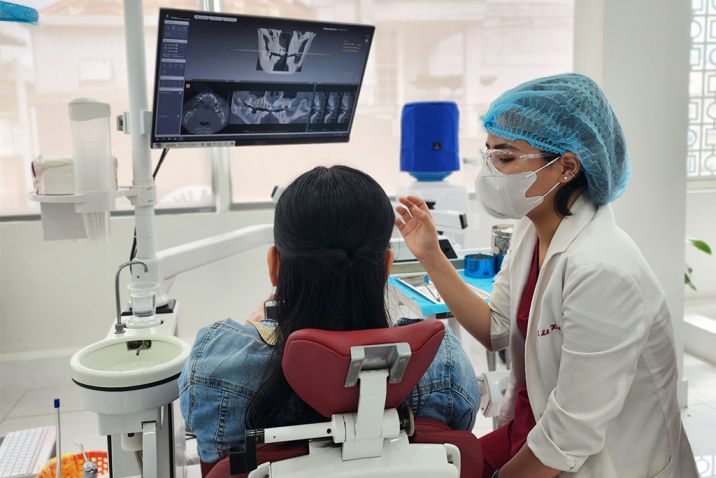
Consultation with a specialist
In complex cases, your dentist may recommend consulting with a specialist, such as a periodontist or oral surgeon. These experts possess advanced training in managing dental implants and can offer a more in-depth assessment of your specific situation.
Collaboration among dental professionals ensures comprehensive care tailored to the patient’s needs, ultimately optimizing the chances for successful treatment.
Treatment options for delayed implant pain
The treatment approach for addressing dental implant pain years later will depend on the underlying cause and severity of the issue. A range of options is available to alleviate discomfort and restore health.
Non-surgical options: Antibiotics and anti-inflammatory medications
For mild cases of infection or inflammation, non-surgical treatments may suffice. Antibiotics can effectively combat bacterial infections such as peri-implantitis, while anti-inflammatory medications help reduce swelling and pain.
Implementing regular professional cleanings and committing to meticulous oral hygiene practices form essential components of non-surgical management. A proactive approach can significantly improve outcomes and preserve the health of the implant.
Surgical interventions: Bone grafting and flap surgery
In cases where bone loss has occurred around the implant, surgical interventions may be necessary. Bone grafting procedures aim to restore the supporting bone structure, ultimately stabilizing the implant and alleviating pain.
Flap surgery may also be required to access and clean infected areas, remove diseased tissue, and facilitate the regeneration of healthy tissues. These surgical procedures can provide profound benefits, improving both comfort and the longevity of the implant.
Revision implant surgery: Replacing the current implant
In situations where the implant is severely compromised due to infection, fracture, or failed osseointegration, revision surgery may become necessary. This involves removing the existing implant and replacing it with a new one. Prior to replacement, bone grafting might be required to ensure adequate support for the new implant.
Understanding the importance of timely intervention can prevent further complications and optimize the chances for successful outcomes.
Preventing future implant pain
Taking proactive steps to maintain optimal oral health is essential in preventing future implant pain and ensuring the long-term success of dental implants.
Maintaining optimal oral hygiene
Implementing a strict oral hygiene regimen is paramount for preventing infections and maintaining healthy tissues surrounding the implant. This includes brushing twice daily with a soft-bristled toothbrush, utilizing interdental cleaning aids such as floss or interdental brushes, and using an antiseptic mouthwash as recommended by your dentist.
Establishing a consistent oral hygiene routine empowers patients to take control of their dental health and mitigate the risk of complications.
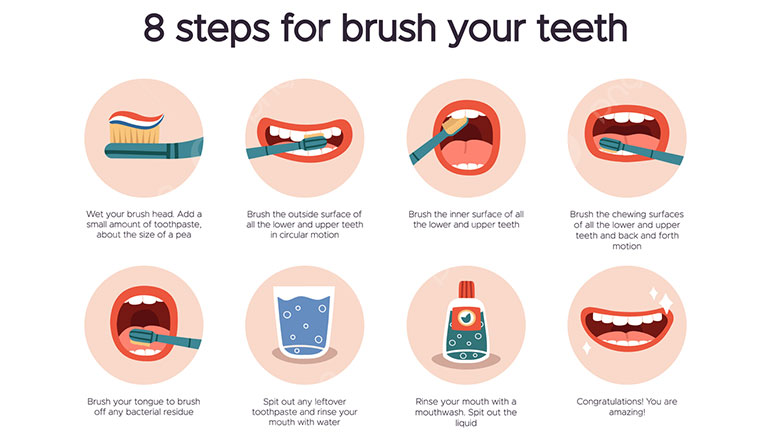
Regular dental checkups and cleanings
Undergoing regular dental checkups and professional cleanings serves as a critical safeguard against potential issues. Your dentist can detect early signs of infection, inflammation, or bone loss, enabling prompt intervention and preventing the development of more severe complications.
Routine visits foster a collaborative relationship between the patient and dentist, promoting greater awareness and understanding of the ongoing health of dental implants.
Avoiding harmful habits like smoking and excessive alcohol consumption
Habits such as smoking and excessive alcohol consumption can significantly undermine oral health and compromise the healing process following implant placement. Smoking impairs blood flow to the implant site, hindering osseointegration and elevating the risk of infection.
Similarly, excessive alcohol intake irritates the tissues and weakens immune function, making individuals more susceptible to infections. By avoiding these harmful habits, patients can enhance their overall dental health and promote the longevity of their implants.
Conclusion
While dental implants present a reliable and long-lasting solution for tooth loss, the potential for experiencing dental implant pain years later cannot be overlooked. Understanding the underlying causes of delayed implant pain, recognizing the warning signs, and seeking prompt treatment are crucial for preserving the health and longevity of your dental implant. By maintaining excellent oral hygiene, attending regular dental checkups, and avoiding detrimental habits, individuals can significantly reduce the risk of experiencing implant pain. Embracing proactive care ensures that your dental implants remain a source of confidence and vitality for many years to come.

 Google Reviews
Google Reviews Call
Call
SAIGON IMPLANT CENTER
Best dentist in Vietnam
Saigon Implant Center - Dental Clinic utilizes the latest technology for specialized treatment in the field of Single implant, full jaw implants, All on 4 implants, All on 6 implants, Zygoma implant....
SAIGON IMPLANT CENTER
Best dentist in Vietnam
Saigon Implant Center - Dental Clinic utilizes the latest technology for specialized treatment in the field of Single implant, full jaw implants, All on 4 implants, All on 6 implants, Zygoma implant....